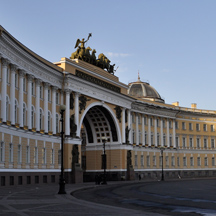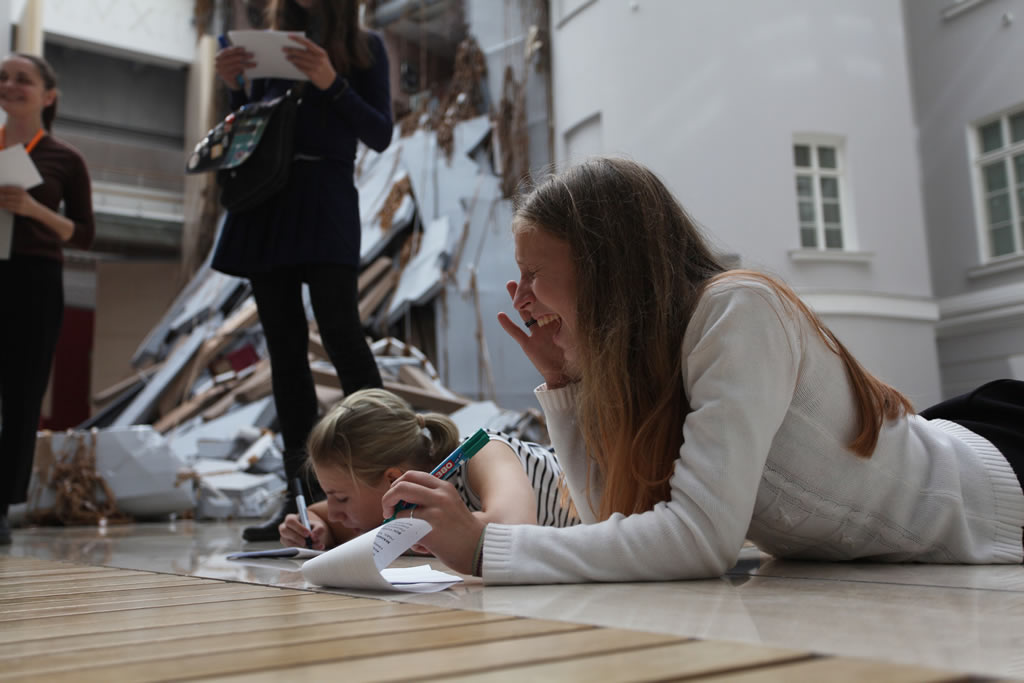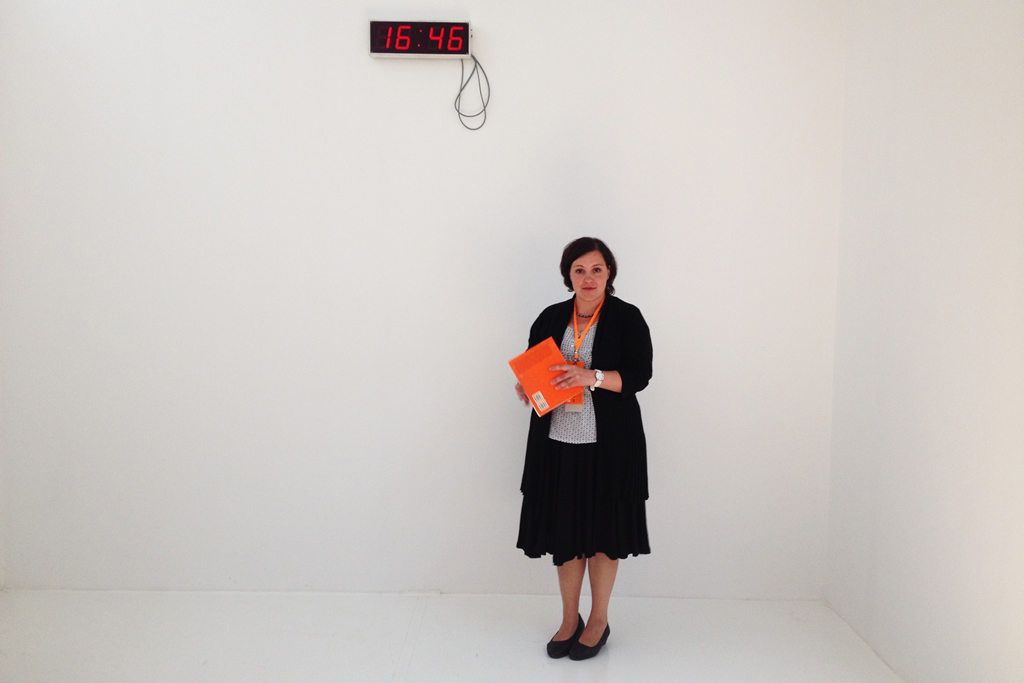
The European Biennial of Contemporary Art
28 June 31 October 2014
St. Petersburg, Russia The State Hermitage Museum
Education
Regardless of your age or experience of contemporary art, you are welcome to take part in the MANIFESTA 10 Education Program.
The Education Program promotes looking, questioning, and the sharing of experiences. Working locally, regionally, and internationally, MANIFESTA 10 engages with schools, universities, local communities, and St. Petersburg residents with the aim of deepening the experience of visiting the Biennial. Education programs include mediated tours, special events, workshops, and discussions, designed to generate a platform for dialogue and debates about the role that art can play within society.
In the State Hermitage Museum, the Education Program provides opportunities for visitors to encounter the historical collection of the Winter Palace collection and to be engrossed by the contemporary artworks presented in the General Staff Building.
Throughout the Biennial, the Education Program investigates methods of communicating with one another and explores how contemporary art can generate new conversations. It aims to discuss such questions as: in what ways can a public engage with a biennial? How does contemporary art contribute to daily life? Where are the spaces in which we come together and discuss our experiences?
What is Art Mediation?
'Mediation' is in fact an ancient form of conflict resolution, which consists of the mediator positioning his or herself between two parties without taking sides, or passing judgement on either of them. An art-mediator thus facilitates dialogue and the exchange of knowledge by stimulating opinions through what the viewer sees and the associations they make with the work directly in front of them.
Mediation – as opposed to the traditional model of the guided tour – instigates debate and intellectual discussion around the artwork from the visiting group. The mediator wants to slow the visitor down in order to ask questions, gather responses and discuss varying opinions so that the groups’ own perceptions form the basis of collectively understanding the work. Rather than taking the active role in the group and providing straight-forward facts, the mediator will react on the initial preconceptions and responses of the group by supplementing the discussion with any information that directly relates to the conversation and which assists the visitor in looking and engaging more fully with the work.
Art Historian, mediator and writer Ben Street, who spent time training new mediators for MANIFESTA 10, emphasised the relevance of mediation - which he believes is the most appropriate way of discussing contemporary art:
"...not to engage in a conversational way with art is to misunderstand its place art historically since most of contemporary art is build on a dialogue."
The difficulty in mediation is that it is dependant on the readiness of the visitor to participate - and since art-mediation in Russia is completely new compared to the long tradition of guiding Manifesta hopes it will be able to successfully introduce this technique so as to really engage the audience of MANIFESTA 10 with the art they encounter at the Biennial.
At MANIFESTA art-mediators conduct tours of the main venue of the Biennial - in the General Staff Building daily.
Public tours are offered every day (except Mondays) at 12:00, 14:00 and 16:00 with an additional tour on Wednesday at 18.00
WORKBOOK
An art mediation resource
All tours in the General Staff Building are free








